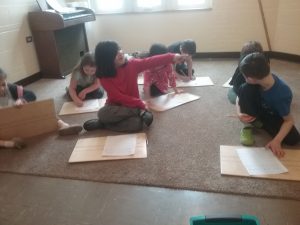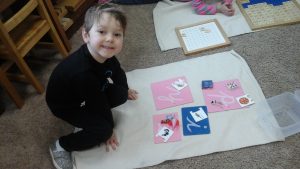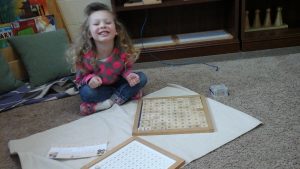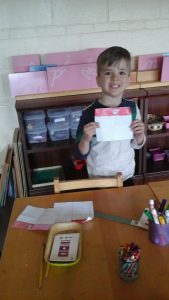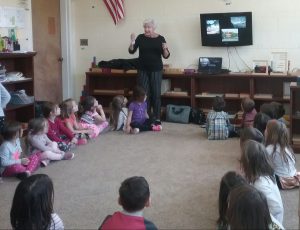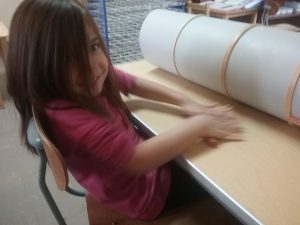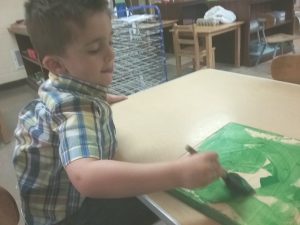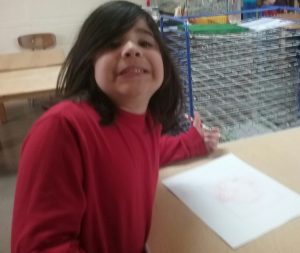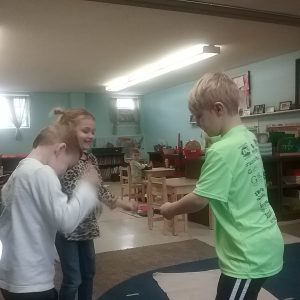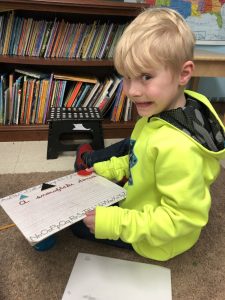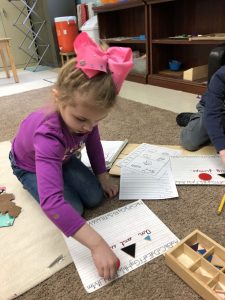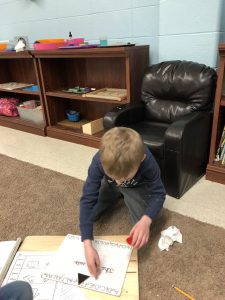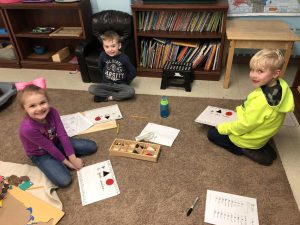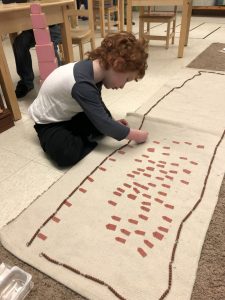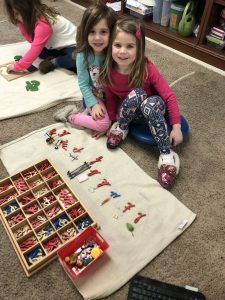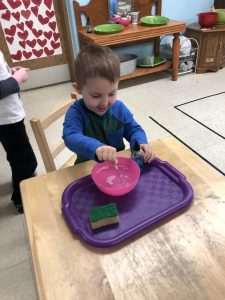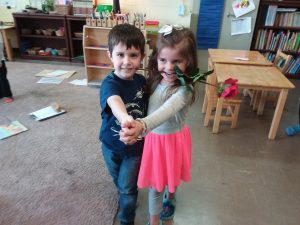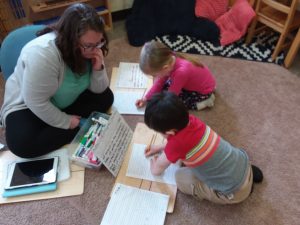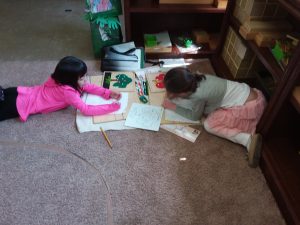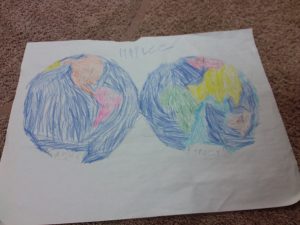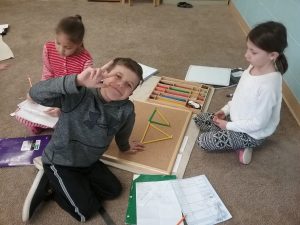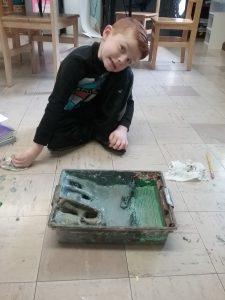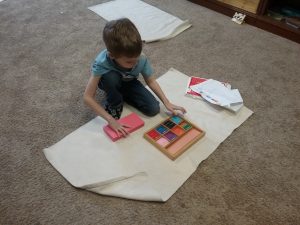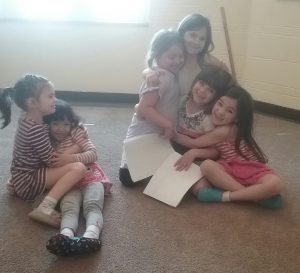This week our “Peek” was written by two of our students! These students read our previous blogs, took pictures around the room, and filled in a blog template. The students did some editing together and with a teacher so what you will read below is their final product. There are still some misspelled words in their final product, but in a Montessori classroom we focus on the process, instead of the end result. Dr. Montessori believed when we put all of the emphasis on the final product, we devalue everything leading up to that point. This can discourage repetition which will make mastery of a skill difficult. The purpose of the students writing the blog is to provide you with a glimpse into the room through their eyes, to provide them with practice of real world skills, and to give them a deeper understanding of the materials in the room. We hope you enjoy their work!
“A Peek at Our Week” by Darin (First Grade) and Isabel (First Grade)
On Monday we ate outside. On Tuesday we made litter bugs. On Wednesday we saw an astronaut read us a story.
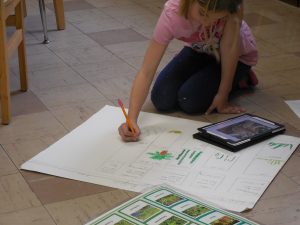
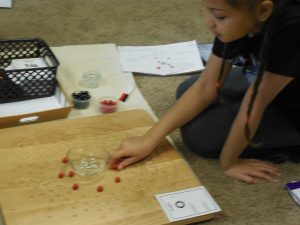
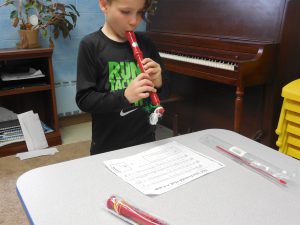
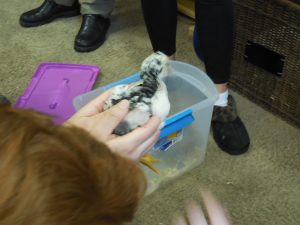
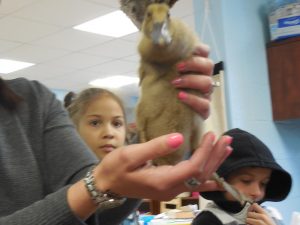
“A Peek at Next Week” by Ms. Ashley
I can’t believe next week begins our final month of school! Next week, first year students will learn the etymology of the words “numerator” and “denominator,” will practice their knowledge of right, obtuse, and acute angles, and will learn how animals satisfy their needs. Second year students will have their next Metric System lesson, will begin studying quadrilaterals, and will complete their study of the main characteristics of vertebrates. Third years will learn the Large Bank Game, will study the internal systems of birds, and will begin drawing their imaginary island! Fourth year students will add integers, begin studying transitive and intransitive verbs, will look at toolkits of hominids, and will begin studying protists.
REMINDERS:
- Spring Portraits – Tuesday, May 1, beginning at 9:30 am! Part of the proceeds from the photos will go towards buying our classroom new materials! Please sign up here to reserve your spot!

